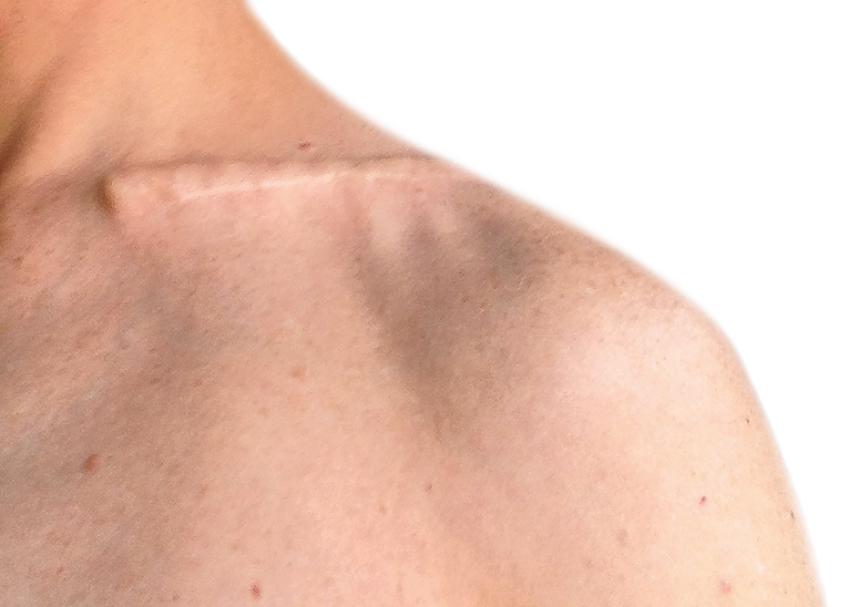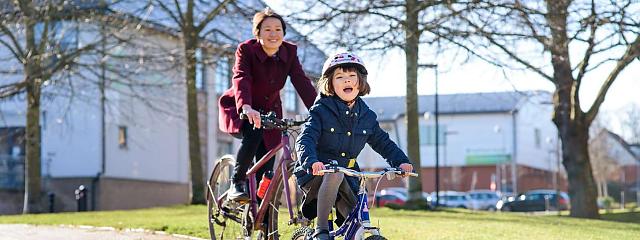
Operate or wait? A guide to collarbone injuries
Operate or wait? A guide to collarbone injuries
Clavicle injuries are common among cyclists, who make up a good number of my patients.
When falling off a bike there often isn’t enough time to put a hand out to break the fall, so cyclists frequently land on their shoulders.
The clavicle is the weakest shoulder bone, and the only bone attaching the shoulder girdle to the rest of the body, making it prone to fracturing.
Sometimes the clavicle doesn’t fracture but the ligaments holding it in place tear, causing a clavicle separation.
It is a difficult decision whether to let these injuries heal naturally or have surgery.
Here are some things to consider.
Clavicle fractures
The decision to undergo surgery for a clavicle fracture will depend on its severity and location.
For a completely displaced fracture in the middle of the clavicle, this a very personal choice.
The main advantages of surgery are a quicker recovery and a greater probability that the fracture will heal.
Whether these benefits are worth the risks of surgery will vary from person to person.
People who need to get back to work or sport quickly may choose to have surgery.
Surgery usually improves the pain straight away. It is important to remember, however, that although the fracture may feel like it has healed, the earliest it will actually heal is six weeks. Initially the clavicle is held entirely by the plate.
If the fixation is strong, patients can usually do some light work or maybe cycle on a turbo trainer after about two weeks.
You must check with your surgeon how strong the fixation is and what activities you can do.
As a rule of thumb, if you choose to have surgery you can expect your recovery to be six weeks quicker than someone who leaves the fracture to heal naturally.
Most displaced middle clavicle fractures treated without surgery will heal. But up to 15% won’t. It is usually only possible to find out if the fracture will heal or not by waiting for six to twelve weeks to see if it does so.
If the clavicle doesn’t heal after this time, it will most likely need surgery. The entire process of finding out the fracture hasn’t healed, arranging surgery, and recovering from surgery can take three or four months.
For some people this would be a minor disappointment; they can take comfort knowing that they tried to avoid surgery.
For others, the extra recovery time could mean losing their job or taking too much time out of their sport. Consider surgery at the time of injury if the small chance of a prolonged recovery is unacceptable. Surgery makes a quicker recovery much more likely, but it does not guarantee this.
Displaced fractures at the end of the clavicle near the shoulder often won’t heal naturally, so surgery is likely to be needed.
These fractures can be fixed with specially designed clavicle fixation plates, sutures and clavicle hook plates that hook under the top of the shoulder blade. If a hook plate is used, it almost always needs removing later.
Clavicle separations
Most clavicle separations are minimally displaced (grade 1 or 2). There is little or no deformity and surgery is not needed.
Moderately displaced clavicle separations (grade 3) often have a visible bump at the end of the clavicle near the shoulder. These injuries can do well without surgery, and it is usually worthwhile to have a few weeks of physiotherapy.
If shoulder function improves quickly, surgery can be avoided. If it does not, surgery may be needed.
Severely displaced clavicle separations (grade 4, 5 or 6) often have a visible bump at the end of the clavicle. These usually require surgery.
Grading clavicle separations is difficult, so it is important to see a health care professional experienced in their management.
Weighing it up
The risks of surgery are present but should not be overplayed. Most complications are minor, such as a numb patch under the scar and metal that can be felt under the skin.
Serious complications such as deep infections or the fracture not healing are unusual.
The large blood vessels that supply the arm are very near the clavicle and can be damaged by surgery, but this is extremely rare.
People with clavicle fractures should have a discussion with their surgeon about the specific risks for them.
When you attend the emergency department or A&E with a new injury, they will usually arrange a fracture clinic appointment.
At the fracture clinic you will have a consultation with a surgeon or a member of the surgeons’ team. It is helpful to have a list of questions to ask.
If you need more time to think things over, ask to come back in a week. If your clavicle fracture or separation is an old injury, you can ask your GP to refer you to a shoulder surgeon.
A phone consultation with your GP may be the most convenient way of arranging this. If you want a second opinion after seeing a surgeon, you can ask them.
If you don’t want to ask the surgeon for this, you can phone the surgeon’s secretary or the hospital’s Patient Advice and Liaison service. The NHS routinely treats clavicle fractures.
If you have health insurance, it will usually cover the cost of treating a clavicle fracture in a private hospital. (You will receive the same treatment but you will have a private room, can choose your surgeon, and may get treated sooner.) If you don’t have health insurance, you can self-pay to have your clavicle fracture treated privately without a referral from your GP.
Phil Holland is a consultant for South Tees Hospitals NHS Trust. Local patients can book a consultation with him through their GP. He treats private patients from all over the country












